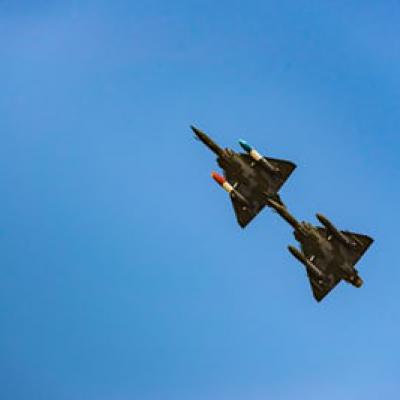Radar and Sonar Processing Expertise
NA Software (NAS) has a long experience of developing both airborne and spaceborne radar surveillance systems for government and defence organisations. This includes both Synthetic Aperture Radar (SAR) high-resolution image processing systems and Ground Moving Target Indication (GMTI) radar systems. In more recent years we have also carried out a number of sonar projects for leading defence contractors in Naval systems.
Modular SAR ProcessorsIn Long-range, high resolution, SAR systems we encounter problems with geometric linearity and focus quality caused by unknown sensor motions or atmospheric variation. We have incorporated autofocus and phase correction into our modular SAR processors that rectify both these problems. Both satellite and airborne SAR data is subject to a number of perturbations that stem from various causes and lead to unknown phase changes in the raw data and subsequent imagery which may be defocussed or non-linear. As part of their SAR processing capability, NAS has implemented offer a SAR Processor capability that allows unknown sensor motions to be derived from the received SAR signal. The derived motions can then be applied in a motion compensation process to correct the sensor track to a straight line. We provide an advanced implementation of these techniques in our Modular SAR Processor. This processor is designed to provide SAR development groups with the ideal tool to study the effects of a variety of perturbations or of new processing techniques, on SAR image quality. It comes complete with our SAR data simulator, enabling the construction of realistic simulated data of arbitrary ground scenes.
GMTI ProcessorsNAS has developed a range of Ground Moving Target Indication (GMTI) processors for traditional MTI radar systems that operate with a low ground resolution and for systems such as SAR surveillance systems that operate at a high resolution. A new radar processing technique has been developed in-house that detects ground moving targets from high-resolution SAR data. We have called this technique SARMTI, which offers a unique capability in SAR imaging of moving targets. The technique provides full resolution SAR images of moving targets, detected and correctly positioned against the SAR background image with measured values of the target motions. This is an enormous advance on conventional methods, as discussed below. Many applications need to identify moving targets. The standard approach (usually given the acronym MTI or GMTI) utilises a separate mode of data collection from SAR: at any one time, you collect SAR data OR MTI data. MTI is not an ideal methodology: Standard GMTI techniques
SARMTINAS has developed novel algorithms and technology for extracting MTI information directly from SAR data. We call the techniques SARMTI.
SARMTI provides:
For more information on SARMTI please Contact Us. |



